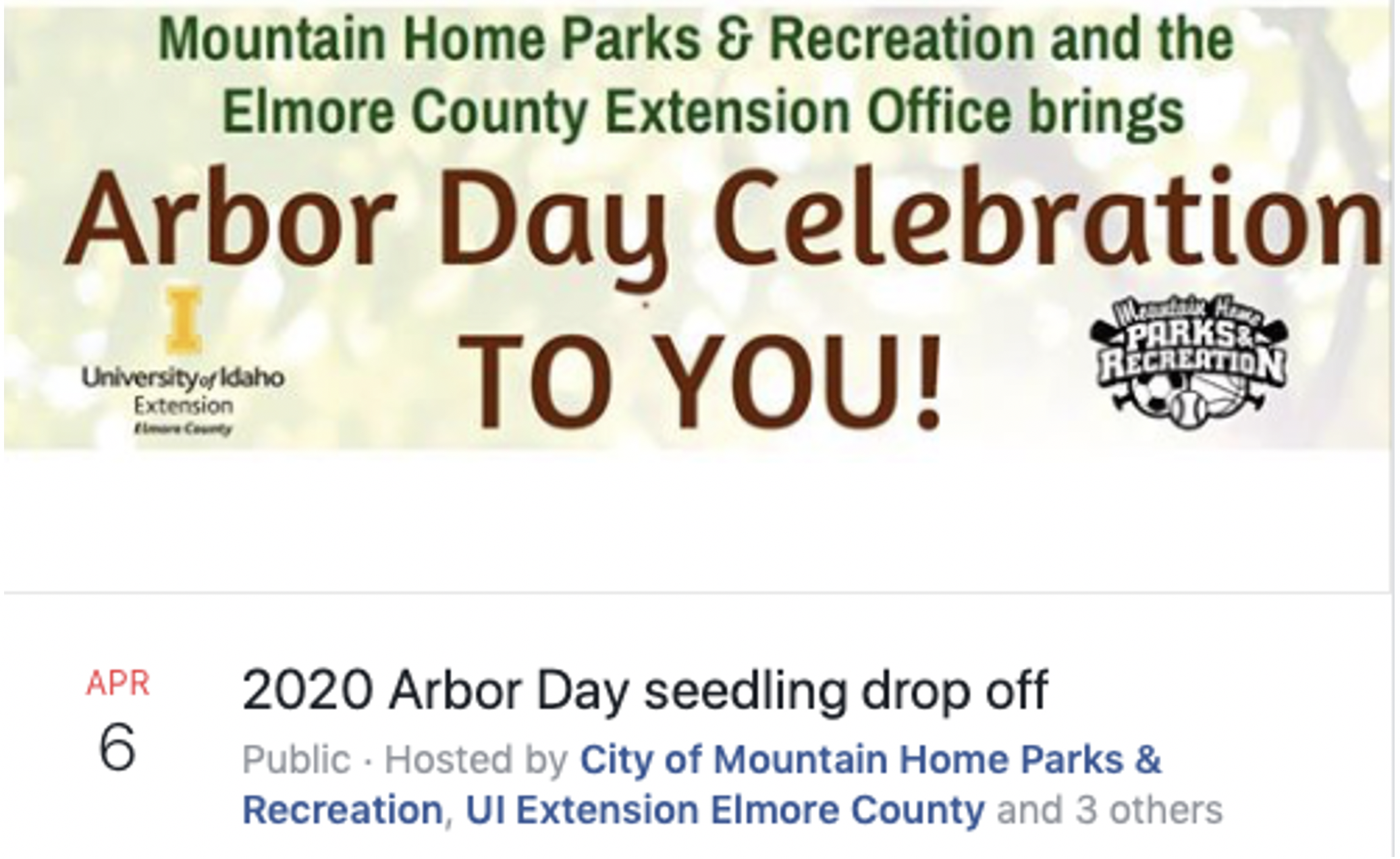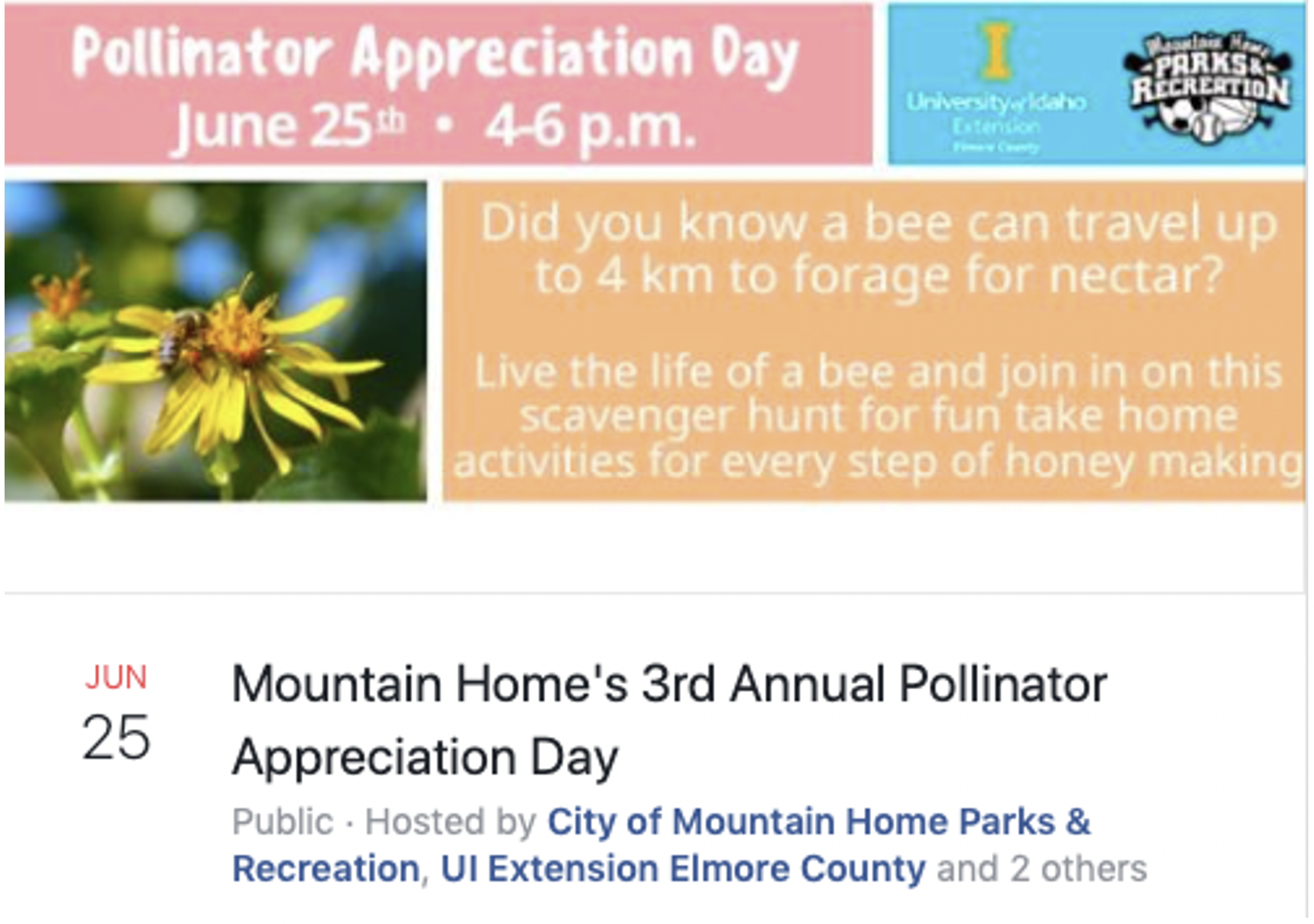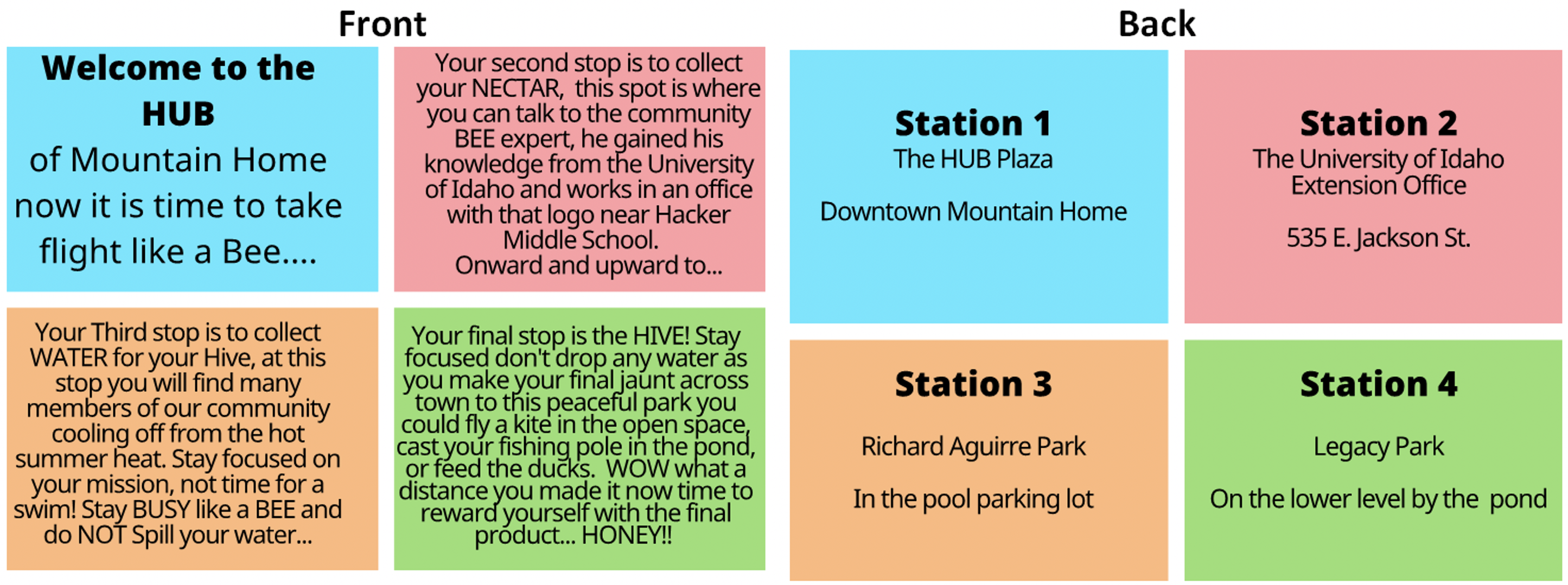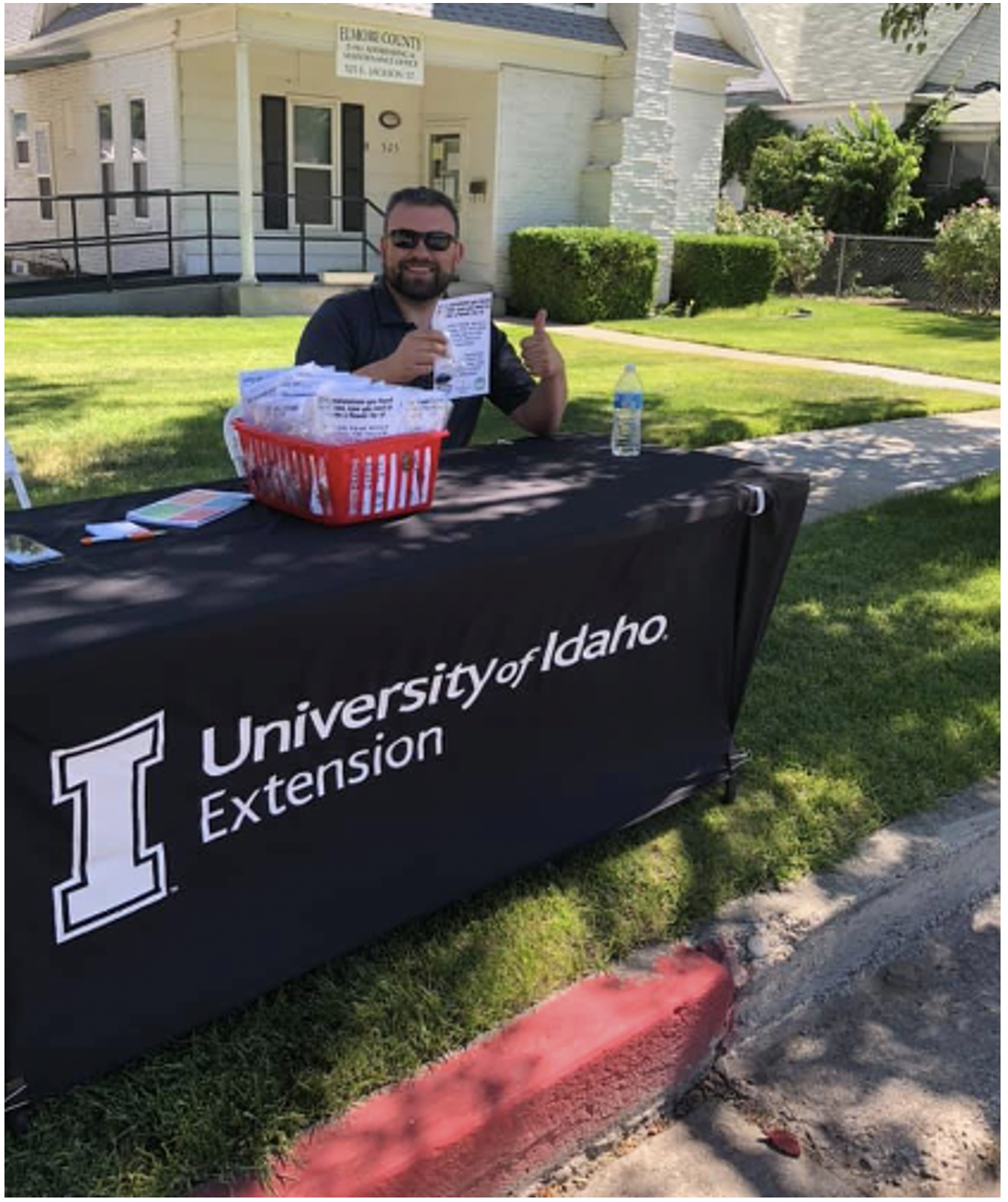 |
October 2020
|
October 2020 // Volume 58 // Number 5 // Ideas at Work // v58-5iw1
Adapting to Provide Innovative In-Person Extension Programming During a Pandemic
Abstract
The success of Extension programming is often predicated on in-person events, and numerous Extension programs are preplanned and scheduled well in advance of the anticipated programming date. In-person events help foster community, collaboration, and the human connection within our society. During the COVID-19 pandemic, it is critical for Extension to be adaptive and innovative and react proactively to worldwide, nationwide, and local authorities' and health professionals' recommendations to protect clientele, staff, and volunteers. Extension educators can tailor in-person programs to align with health professionals' recommendations by using creative, innovative, and adaptive measures. We describe two such programs.
Introduction
The Elmore County Office of University of Idaho (UI) Extension has been partnering with the City of Mountain Home Parks and Recreation Department in recent years to conduct annual in-person educational events. Two events held to promote Extension education and pique the public's interest in science, nature, plants, trees, bees, and butterflies are Arbor Day Celebration and Pollinator Appreciation Day. Arbor Day Celebration is scheduled far in advance of its springtime occurrence, and tree seedlings for the event (550 total) are ordered in October from the UI Franklin H. Pitkin Nursery in Moscow, Idaho. The seedlings are shipped to Mountain Home in early April for distribution to the public. In normal circumstances, the event is held outside at a local park with a mass gathering of individuals and features multiple educational booths and activities for all ages. Pollinator Appreciation Day typically involves hands-on youth activities and communication of educational information on pollinators. It is usually held at the Mountain Home Farmers Market and in conjunction with June's National Pollinator Week to promote pollinator education. Words such as "normal," "typically," and "usually" did not apply, however, in the spring and summer of 2020. Due to the emergence and subsequent worldwide spread of a novel coronavirus (SARS-CoV-2) and the associated human respiratory disease, COVID-19, these previously scheduled community events could not be conducted as planned.
In early 2020, specific precautionary measures related to the developing COVID-19 pandemic were recommended by the Centers for Disease Control and Prevention (CDC); the Idaho Department of Health and Welfare (IDHW); and Central District Health (CDH), the Idaho public health district serving Mountain Home (CDC, 2020; CDH, 2020; IDHW, 2020). Recommendations in place during April and June included quarantining, staying home if one was sick, sanitizing/cleaning/disinfecting frequently touched items, practicing proper handwashing, implementing social distancing (i.e., maintaining a distance of at least 6 ft between humans), and avoiding gatherings of 10 or more people (CDC, 2020; CDH, 2020; IDWH, 2020). We could not hold our Arbor Day Celebration and Pollinator Appreciation Day as we normally would and be in accordance with health care professionals' expert opinions and recommendations regarding public safety. Instead of canceling the events, we adapted, innovated, and proactively responded to the recommendations. As the pandemic continues, our strategies may provide others with ideas for continuing to provide in-person Extension programming.
Adaptation, Innovation, and Public Response
Our team used electronic means to communicate regarding the two educational public events. We used Facebook to inform the public that the events would occur and to provide information and details about each event (Gharis et al., 2014). We revamped our methods for delivering both programs, and the "alternative" approaches we used were ideal with regard to health care professionals' recommendations (Fawcett et al., 2020).
Arbor Day Celebration
The tree seedling plant selection for the Arbor Day event included 50 seedlings each of 11 species. We decided that physically delivering the seedlings was a best-guess option (Nash et al., 2020) for fulfilling the orders for them (Figure 1). Each seedling recipient was required to have a Facebook event ticket to participate and receive seedlings, and our team physically delivered the seedlings to community members' places of residence on April 6. Fifty-eight public participants signed up for the event, and all received the top two choices of tree seedlings they had specified when ordering.
Figure 1.
Facebook Event Page for 2020 Arbor Day Seedling Drop-Off Event Held April 6, 2020

We ensured safety during the drop-off event in several ways. One team member per vehicle was a requirement. The team member was equipped with a map of drop-off locations, hand sanitizer, U.S. Department of Agriculture Natural Resources Conservation Service plant guides, educational planting instructions, and individually wrapped tree seedlings. The team member dropped off the educational materials and seedlings at residences, sanitizing before and after each drop-off.
After the drop-off event, 434 tree seedlings remained unclaimed. Our team met virtually to determine how to adapt to the situation. We decided to disseminate the remaining seedlings via an alternative drive-through event (Figure 2), thereby avoiding close physical contact and a gathering of more than 10 people. We also decided face coverings would be required for everyone participating in the event to further protect clientele, staff, and volunteers from exposure to COVID-19 (Figure 3). We held the drive-through event on April 21 in front of the Mountain Home Parks and Recreation Department facilities, allowing us a 200-ft area in which we could easily apply social distancing. The Arbor Day Celebration drive-through event attracted 309 public participants, who came from throughout Elmore County, Idaho, to receive free tree seedlings, and all remaining 434 seedlings were distributed.
Figure 2.
Facebook Post for 2020 Arbor Day Seedling Drive-Through Event Held April 21, 2020

Figure 3.
Volunteer Handing Tree Seedling to Member of the Public During 2020 Arbor Day Drive-Through Event

Pollinator Appreciation Day
As with the Arbor Day Celebration events, we advertised Pollinator Appreciation Day on social media via Facebook (Figure 4). To adapt this event, we took our cue from bees. Bees have been known to travel great distances (several kilometers) in order to forage for nectar resources (von Frisch, 1967). We combined the ideas of a drive-through event and a "scavenger hunt" that would approximate the long-distance (4-km) foraging behavior of worker honey bees to deliver the event. The educational scavenger hunt comprised four manned stations spread across the city. We provided the clues for the scavenger hunt on Facebook and via a clue card handout (Figure 5). Stations were located at well-known public areas. At each station, clientele received take-home educational craft kits (Figure 6). Ninety-four public participants attended the Pollinator Appreciation Day drive-through event.
Figure 4.
Facebook Post for 2020 Pollinator Appreciation Day Event Held June 25, 2020

Figure 5.
Clue Card Handout for 2020 Pollinator Appreciation Day Scavenger Hunt

Note. The location clue was presented on the front of the card, with the actual location identified on the back to ensure that participants found the stations.
Figure 6.
Educational Craft Kit Giveaway Station at 2020 Pollinator Appreciation Day Drive-Through Event Held June 25, 2020

Response
Our adaptations for the Arbor Day Celebration and Pollinator Appreciation Day educational events were effective. We succeeded in disseminating all Arbor Day Celebration seedlings, along with accompanying educational materials, and in attracting a substantial number of participants for the Pollinator Appreciation Day scavenger hunt (Table 1).
| Event | No. of program participants | No. of seedlings delivered/handed out | No. of pollinator educational craft kits handed out |
|---|---|---|---|
| Arbor Day seedling drop-off event | 58 | 116 | |
| Arbor Day seedling drive-through event | 309 | 434 | |
| Pollinator Appreciation Day drive-through event | 94 | 94 |
As well, community members expressed positive responses to the adapted programs. They posted Facebook comments such as "Got ours—thank you sooooo much!!," "Thank you so much for my lilac!," "Thank you!!," "Got mine thank you," "You all are amazing," "Another great Job you all," and "This was a great activity! Thanks."
Conclusions
Though not all Extension programs may be delivered using drop-off or drive-through modes, these adaptive methods ensured that our educational programming continued and may inspire other creative adaptations for various types of Extension programming. Even during worldwide pandemics, it is critical for Extension to continue to adapt, innovate, and proactively respond. Innovation has been defined by Argabright et al. (2012) as implementing, transferring, and using new ideas. Further, Meyer et al. (2015) stated that "organizations transform ideas into new/improved products, services, or processes in order to advance, compete and differentiate themselves successfully" (Definition for Program Innovation section, para. 1). Implementing social distancing, wearing face coverings, and applying sanitization practices protected Extension clientele, staff, and volunteers. Transforming classic in-person Extension education programs into adaptive delivery and drive-through events is a now important option in community education.
Author Note
Correspondence concerning this article should be addressed to Brad Stokes. Email: bstokes@uidaho.edu
References
Argabright, K., McGuire, J., & King, J. (2012). Extension through a new lens: Creativity and innovation now and for the future. Journal of Extension, 50(2), Article v50-2comm2. https://www.joe.org/joe/2012april/comm2.php
Central District Health. (2020). COVID-19 resources. https://cdhd.idaho.gov/dac-coronavirus-resources
Centers for Disease Control and Prevention. (2020). How to protect yourself & others. https://www.cdc.gov/coronavirus/2019-ncov/prevent-getting-sick/prevention.html
Fawcett, J. E., Parajuli, R., Bardon, R., & Boby, L. (2020). Tools for quickly adapting during pandemics, disasters, and other unique events. Journal of Extension, 58(2), Article v58-2tt1. https://joe.org/joe/2020april/tt1.php
Gharis, L. W., Bardon, R. E., Evans, J. L., Hubbard, W. G. & Taylor, E. (2014). Expanding the reach of Extension through social media. Journal of Extension, 52(3), Article v52-3a3. https://joe.org/joe/2014june/a3.php
Idaho Department of Health and Welfare. (2020). Official resources for the novel coronavirus (COVID-19). https://coronavirus.idaho.gov
Meyer, N. J., Boyce, S. P., & Meyer, R. L. (2015). A call to embrace program innovation. Journal of Extension, 53(3), Article v53-3comm1. https://www.joe.org/joe/2015june/comm1.php
Nash, A., Brown, S. C., & Cascio, J. (2020). Importance of best guesses in emergency situations. Journal of Extension, 58(3), Article v58-3comm2. https://www.joe.org/joe/2020june/comm2.php
von Frisch, K. (1967). The dance language and orientation of bees. Harvard University Press.




